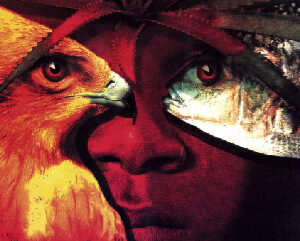
Zooanthropology studies the different forms and the referential value of the intersubjective relationship between humans and other species. Zooanthropology assumes that the encounter with the etherospecific is a special event, which cannot follow traditional interpretative paths, because they overlook the intersubjective and referential element. Accordingly, zooanthropology differs from:
a) the stimulatory or surrogate view of the traditional psychological approach;
b) the instrumental interpretation of the animal as being “good-for” featuring in anthropological and zootechnical approaches;
c) the interactive view derived from ethology and ecology that considers relationships among species rather than individuals.
Zooanthropology was born in the 1990s on the wave of research about: a) the educational asset deriving from the child-animal interaction, studied by Hubert Montagner in France, and b) the hybridising implications of the relationship with otherness and its impact on the definition of human traits analysed by Roberto Marchesini in Italy (Despret 2004; Lestel 2004; Marchesini 2005; Iacub 2011; Martinelli 2010; Sax 2013).
The crucial difference between zooanthropology and other research areas investigating human-non-human relationships (anthrozoology, animal studies, critical animal studies) is the rejection of a multidisciplinary approach and the definition of a specific epistemological structure that is based on the following principles:
1) the heterospecific represents otherness, i.e., a different entity endowed with subjectivity;
2) the relationship between the human and the heterospecific is always dialogical;
3) there are different relationship dimensions between the human and the non-human;
4) the relationship with the heterospecific triggers changes in humans; hence, the existence of an “animal reference“;
5) encountering the heterospecific is not simply an event but an epiphany, namely a source of inspiration;
6) rather than a human attribute culture is the hybrid outcome of an encounter with the heterospecific.


